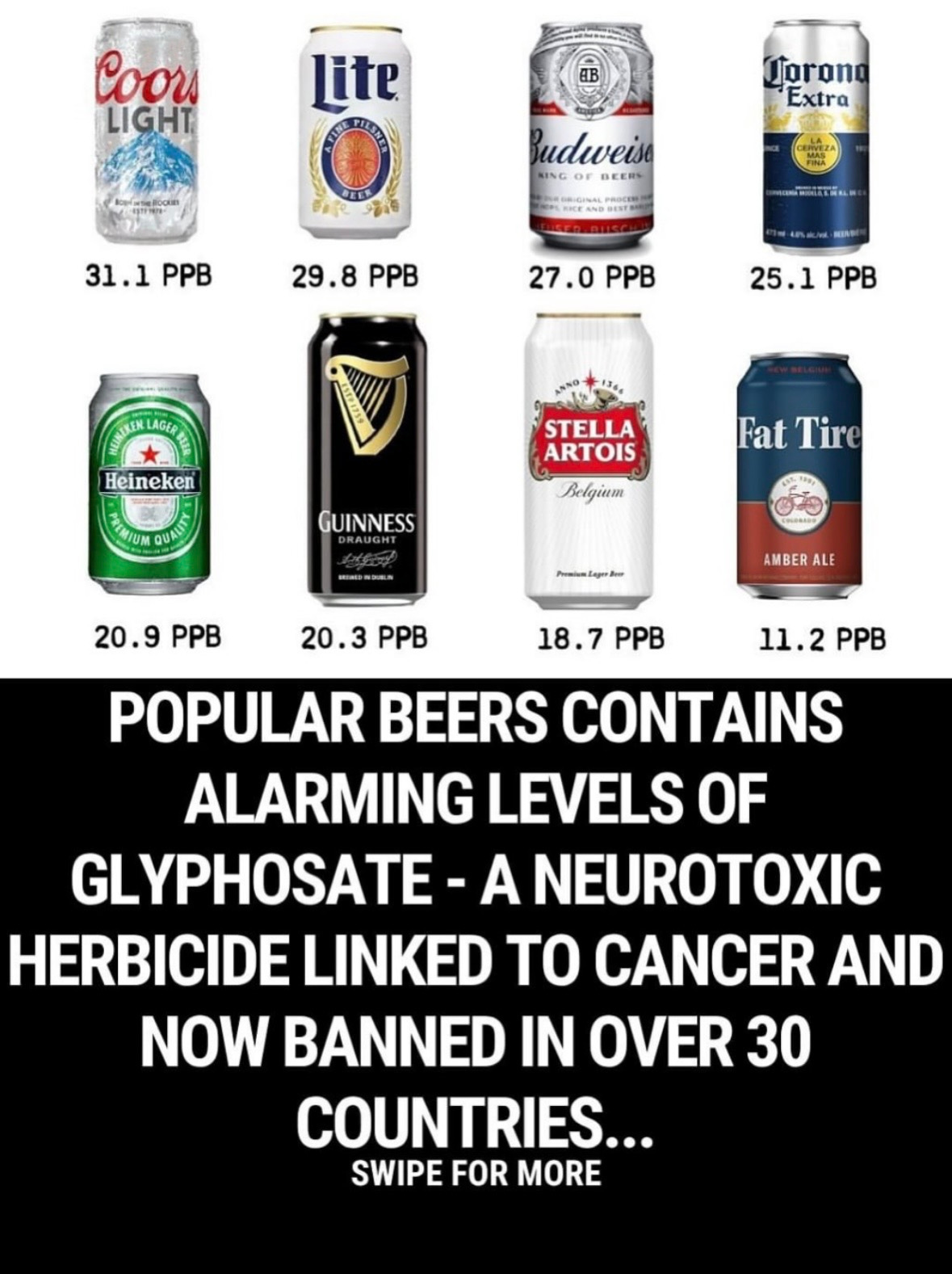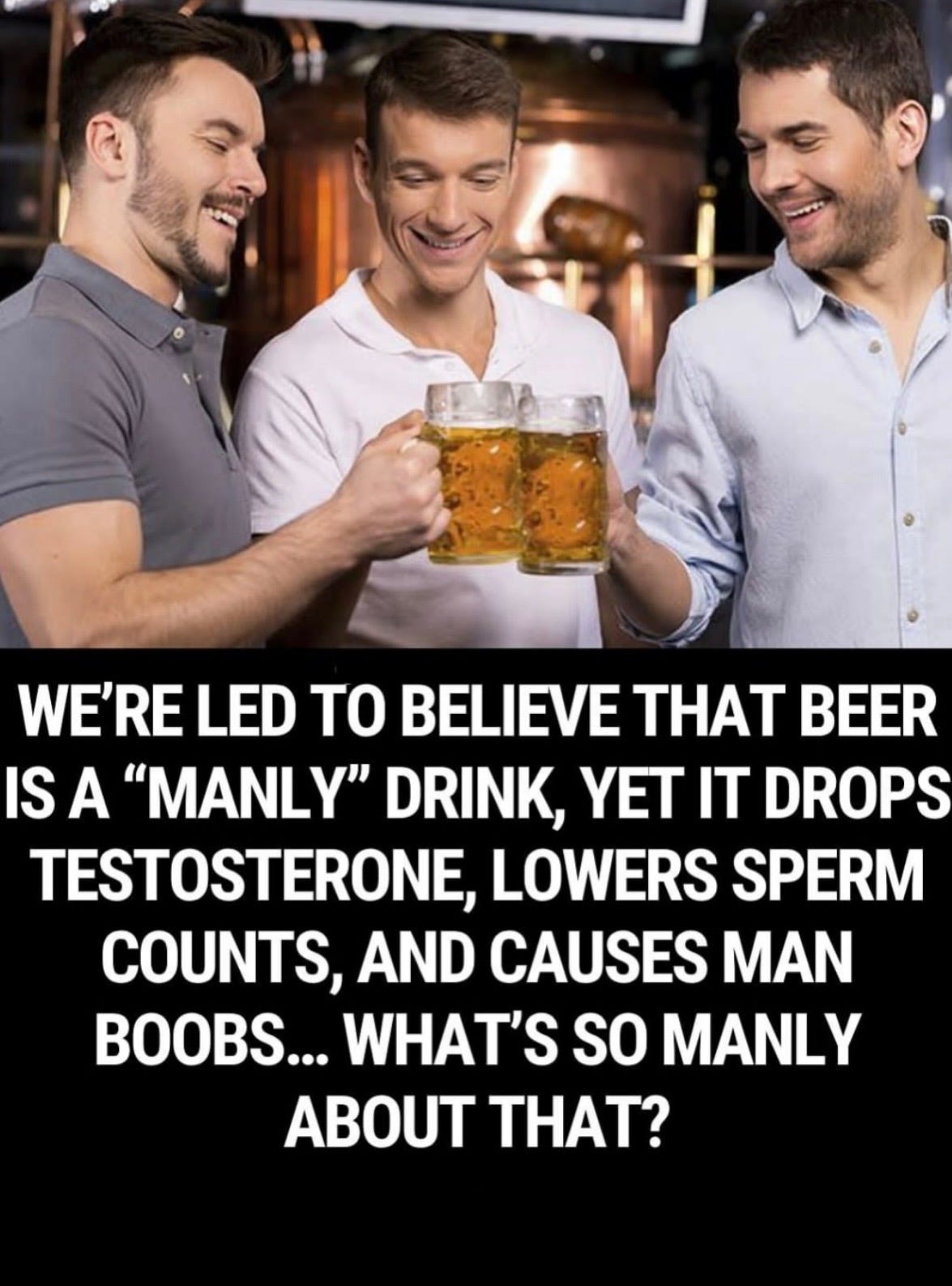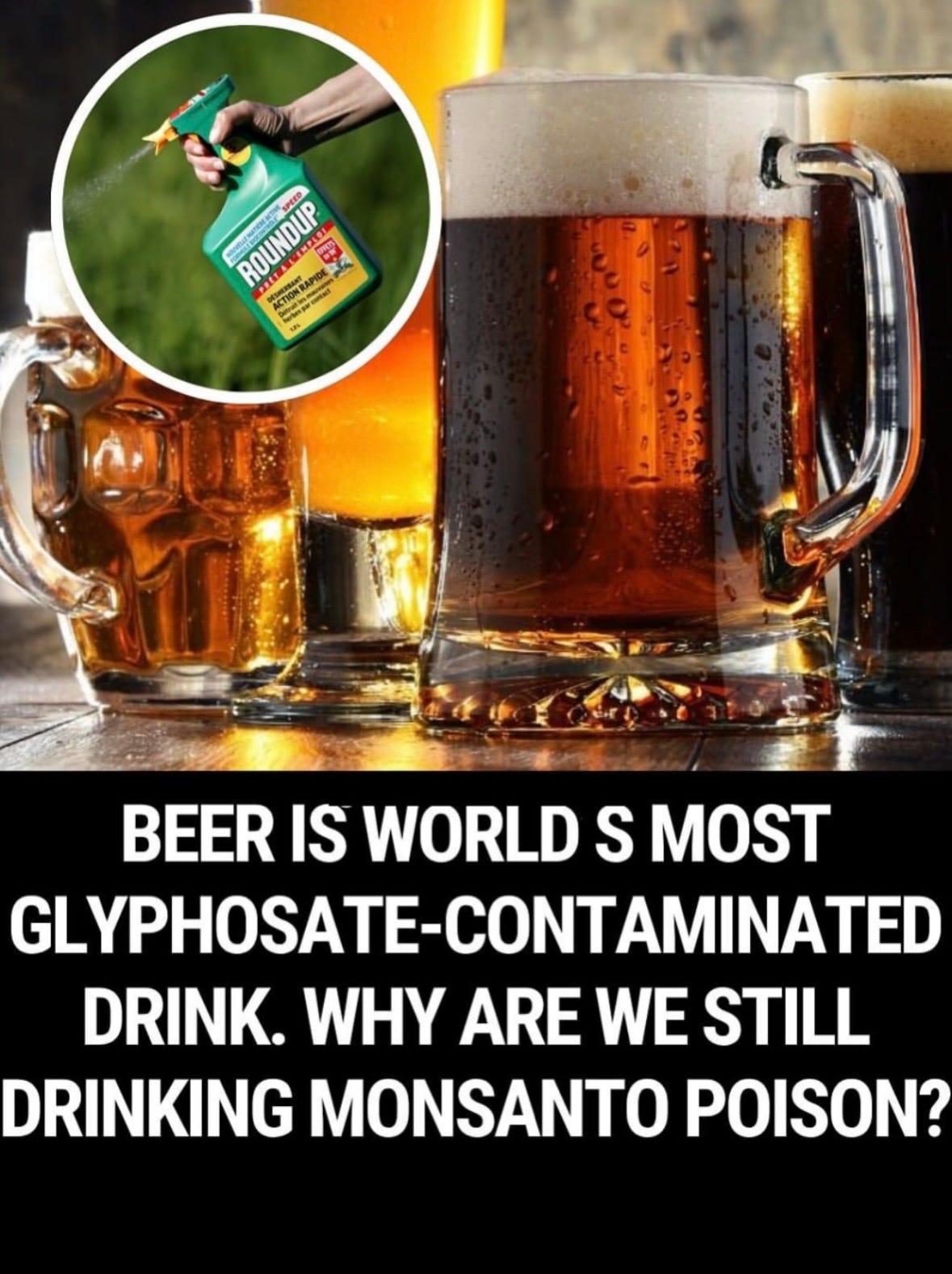Beer Laced with Glyphosate… it’s in the soil/grain thus in the end product 
“Beer is the world’s most glyphosate-contaminated drink.” That provocative claim has circulated on social media—but what’s the real story?
1. What Did the Study Find?
In 2019, the U.S. Public Interest Research Group (U.S. PIRG) tested 20 beverages (15 beers and 5 wines). They detected glyphosate in 19 of them—including widely consumed mass-market beers like Budweiser, Coors Light, Corona Extra, Heineken, Guinness, and Stella Artois. One product—Peak Beer Organic IPA—showed no detectable glyphosate.
Glyphosate levels varied: organic brands weren’t immune. For example, Samuel Smith’s Organic Lager measured about 3.5 ppb, while Inkarri Estate Organic Wine registered 5.2 ppb. Conventional beers like Coors and Miller Lite often had levels above 25 ppb.
2. Why Is Glyphosate in Beer?
Glyphosate is often applied as a desiccant on grains like wheat, barley, and oats to accelerate drying pre-harvest. This practice allows residues to remain in the grain—and thus the beer—even when organic standards are followed, due to drift or cross-contamination.
3. How Dangerous Is It?
Glyphosate’s health risks remain debated although emerging evidence is disconcerting
In 2015, the International Agency for Research on Cancer (IARC)—a WHO arm—classified glyphosate as “probably carcinogenic to humans” (Group 2A), based on limited human evidence (e.g., non-Hodgkin lymphoma) and sufficient evidence in animals.
Conversely, regulatory bodies like the U.S. EPA, European Food Safety Authority, and others have consistently concluded it’s “not likely carcinogenic to humans” when used correctly and at typical exposure levels.
A recent rat study (June 2025) revealed tumor development—even at doses considered safe by European standards—adding nuance to the debate. However, human exposures are typically much, much lower.
4. So, Is Your Beer Poison?
It’s more accurate to say your beer may contain glyphosate, but not necessarily at levels shown to harm humans according to current regulatory thresholds. That said, IARC’s classification, legal actions in the U.S., and persistent consumer concern illustrate ongoing controversy.
5. What Can You Do?
Opt for brands tested for low or no glyphosate (e.g., Peak Beer Organic IPA in the PIRG study)
Consider organic or specialties marked “glyphosate-residue free”, where available.
Support regenerative farming and clean-label initiatives.
Maintain a balanced, healthy lifestyle; experts say typical dietary exposures are unlikely to pose significant cancer risk.

References:
U.S. PIRG test results: beer and wine brands, glyphosate levels (ppb), organic vs. conventional.
Use of glyphosate as desiccant, drift into organic products.
IARC’s classification of glyphosate as “probably carcinogenic” (Group 2A).
Contrasting regulatory agency findings (EPA, EFSA, etc.) stating glyphosate not likely carcinogenic.
Recent rat tumor study highlighting potential risks at low doses.
Consensus on food-based exposure being low-risk; glyphosate residue free labels, healthy habits.



